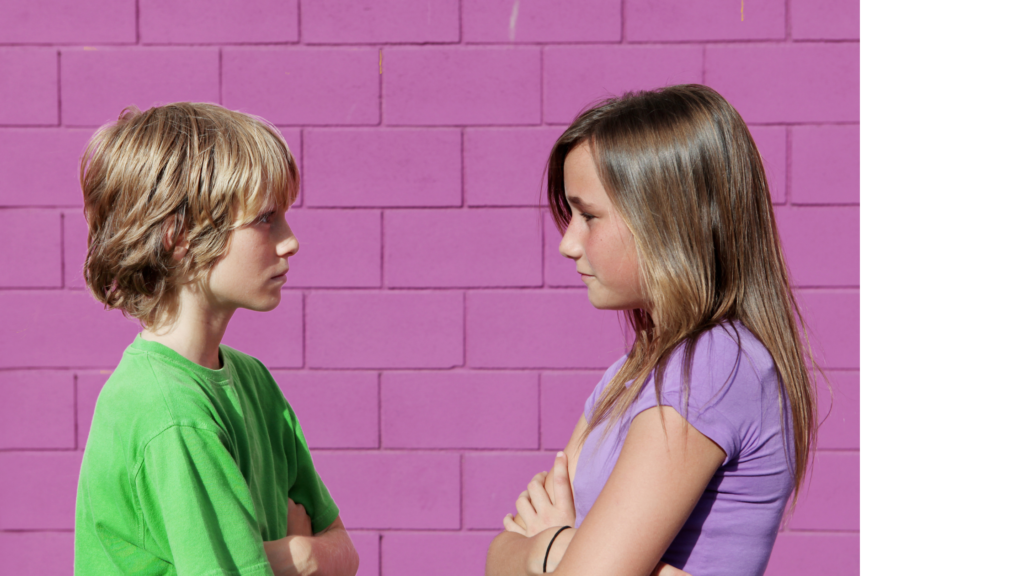 Creating and maintaining friendships are important social skills for our children to develop. With autism, maintaining friendships can be difficult due to misreading emotions and social situations. Perhaps your child desperately wants to have friends, but jeopardizes the relationship before it can even begin due to misreading emotions. Does your child approach another child with misplaced humor not noticing the other child’s tears or sadness? Does your child’s playmate run away from her after she says something that hurt the playmate’s feelings? Did your child brag in excitement about an exclusive party he was invited to, while his peers walk away from him in anger?
Creating and maintaining friendships are important social skills for our children to develop. With autism, maintaining friendships can be difficult due to misreading emotions and social situations. Perhaps your child desperately wants to have friends, but jeopardizes the relationship before it can even begin due to misreading emotions. Does your child approach another child with misplaced humor not noticing the other child’s tears or sadness? Does your child’s playmate run away from her after she says something that hurt the playmate’s feelings? Did your child brag in excitement about an exclusive party he was invited to, while his peers walk away from him in anger?
Understanding emotions, facial expressions, and body language does not come naturally to all children, yet they are essential for forming authentic connections, relationships, and friendships with others. Some children need to be distinctly and directly taught emotions before they understand them. When a child does not know that particular facial expressions equate to specific emotions, he/she is unable to understand what is going on in that moment.
1. Teach emotions first by noticing them in pictures of others.
 Want to help your child understand emotions? Let’s start by acknowledging that children relate to seeing images, pictures, and illustrations of other’s faces and emotions more naturally than recognizing those same faces and emotions in real life situations as they happen. So, if we want to help our children in the way that they learn best, we need to start with books that show characters’ emotions using pictures (real pictures are best, cartoons drawings work, but are not as easily generalized).
Want to help your child understand emotions? Let’s start by acknowledging that children relate to seeing images, pictures, and illustrations of other’s faces and emotions more naturally than recognizing those same faces and emotions in real life situations as they happen. So, if we want to help our children in the way that they learn best, we need to start with books that show characters’ emotions using pictures (real pictures are best, cartoons drawings work, but are not as easily generalized).
To improve emotional understanding and maintaining friendships with children with autism, set up a reading time with your child. Find a comfortable setting (calm environment, soothing lighting, free from distractions, and undivided attention- yes, put those phones aside) for reading time with your child. Have a small selection (2 or 3 max) of books for your child to pick from. Allow your child to select the one that is most interesting to him or her. Settle in and read with your child. Slowly go through the pages (it’s not a race to the end), pause to look at the images before you read the words on the page. Follow your child’s lead and give them the empowerment of feeling in control and center of attention for the activity. Stop and comment on scenes/pictures where there is clear emotion and a reason for it. “She looks sad. I see her tears. Oh, look, her ice cream fell!” Casually question to gather your child’s opinion. Don’t pepper your child with all the questions, it’s not a test, but use these to spark conversation and learning. “How is he feeling? What do you notice on his face? What are his eyes doing? Look at her mouth.” When your child is consistent with picture books (both illustrated images and real life pictures), move on to identifying emotions in tv shows, commercials, video clips, etc. The more frequent (but be casual, don’t fixate on it ALL the time, or it will lose it’s authenticity) you are talking about emotions and others’ reactions, the more common the language becomes for your child.
2. FREE Guide To Reading Emotions
Specifically teach individual emotions and what your child can literally look for to understand that emotion. Print out this as a resource when you are reading picture books and watching video clips. Have your child reference the Guide To Reading Emotions to match the face to what he/she is seeing, then read the description and label it as that specific emotion. Again, use the questions when looking at the Guide to help understand the emotions. (Questions: “How is he feeling? What do you notice on his face? What are his eyes doing? Look at her mouth.”)
3. Practice reading emotions in real time.
Now that your child can recognize emotions in pictures during reading time in a small comfortable setting, it’s time to practice generalizing the skill. Start small, with a family member or a familiar peer. Guide your child through the interaction and practice role playing situations. For example, have a sibling act out (or use a real situation) feeling surprised, mad, sad, etc. Standing near your child, acknowledge the others’ facial expression, tone of voice, or body language so that your child notices them as well. Talk through the situation so your child understands how the other person feels. “I see her mouth is wide open. I notice… I heard her say…” Another way to practice reading emotions in natural situations/real time, is to record a video of a situation. Practice “making the movie” first acting it out with a sibling or family member. Play back the video with your child watching and ask what your child notices. “How did she feel? What did you notice? What happened next?” Neurodiverse children, including children on the spectrum, are highly visual learners. Using a video modeling technique gives them a visual to see specifically what you are teaching (rather than the verbal words you may be saying). Next step: If you have permission to do so, video your child with a friend. Review the video together, calmly noticing body language, facial expressions, and what is happening.
Want more specific steps for teaching emotions and building your child’s awareness of others’ emotions? Get step by step directions for teaching emotional understanding in my stacytriplat.teachable.com course: Why Does My Child Act That Way: How Your Child’s Body Interprets Various Environments and & Simple Ways You Can Help. Use this link to receive $25 off on course enrollment, or use code: BLOG for $25 off at stacytriplat.teachable.com.


